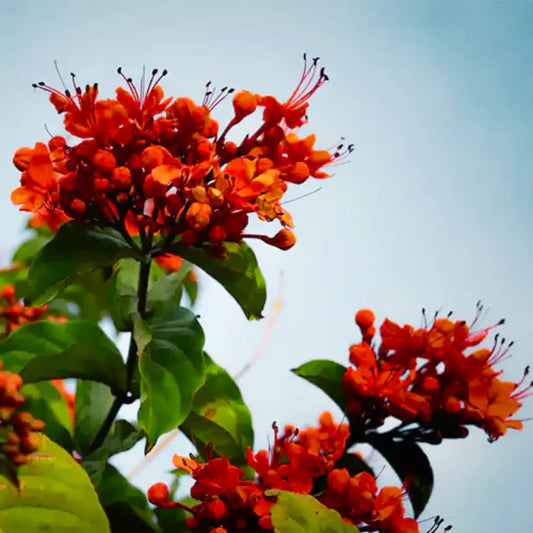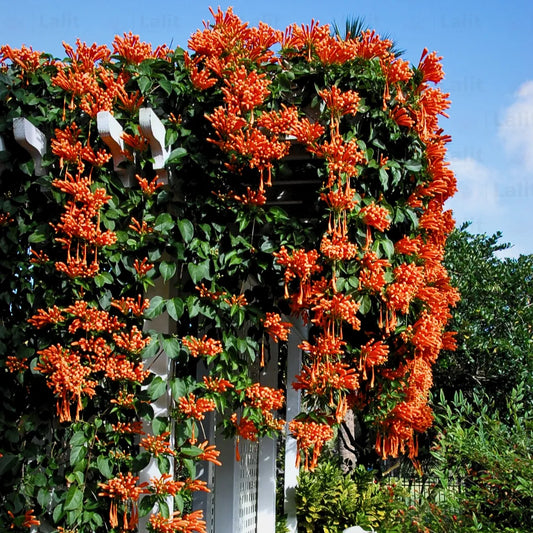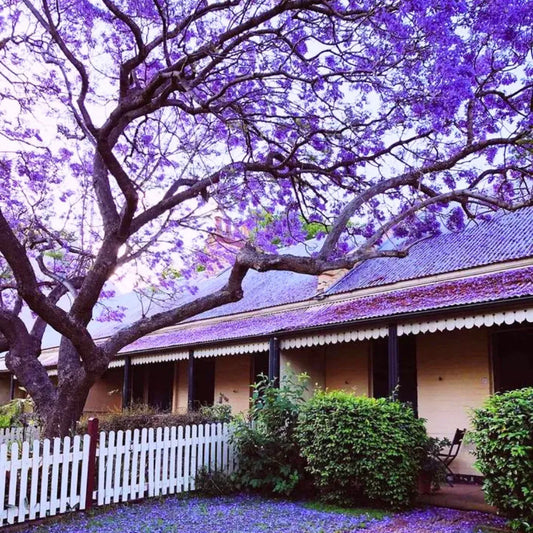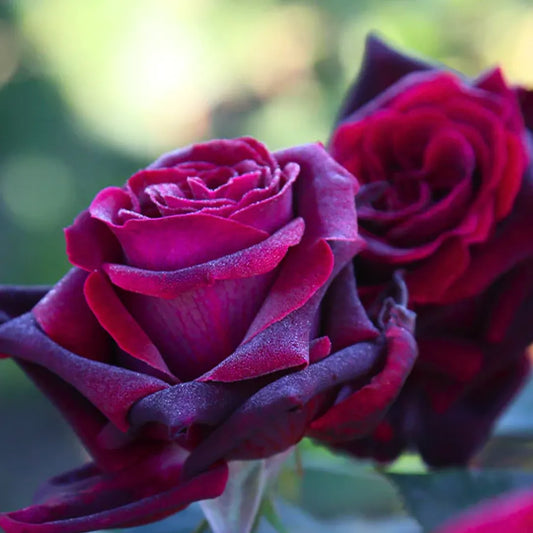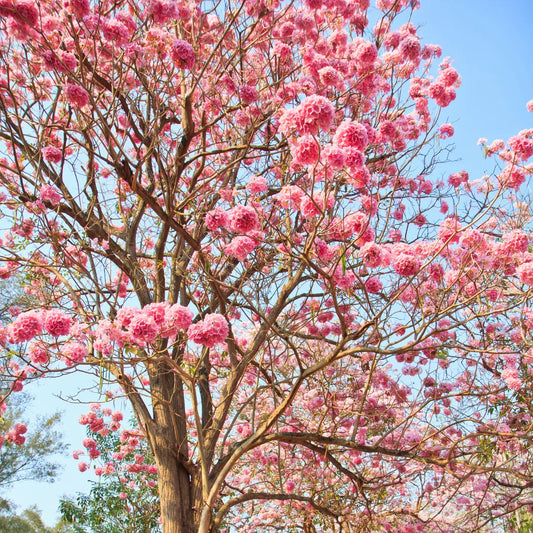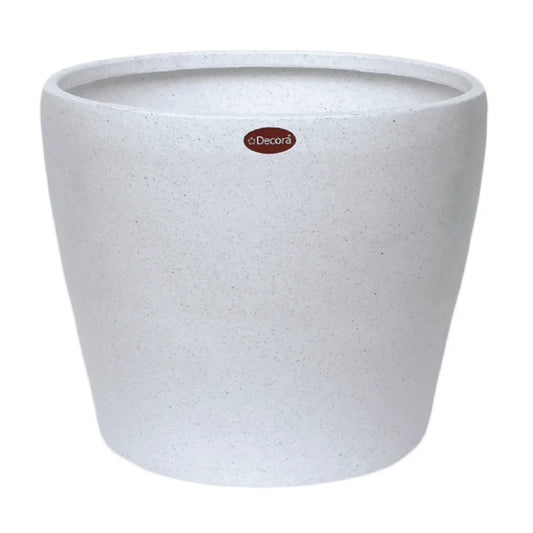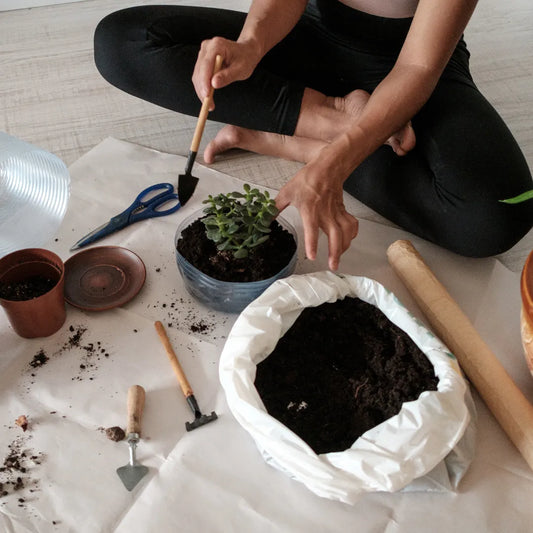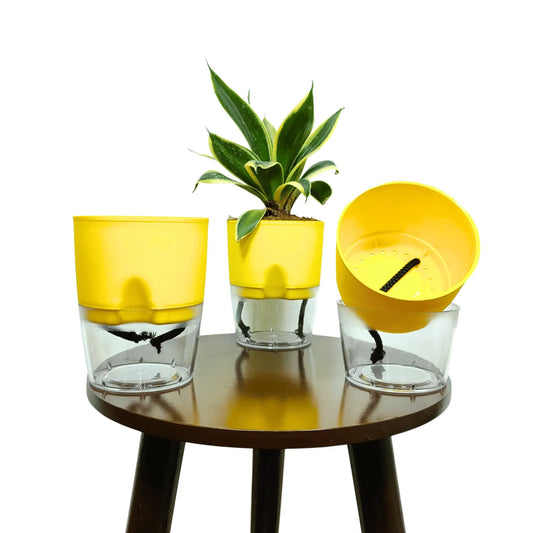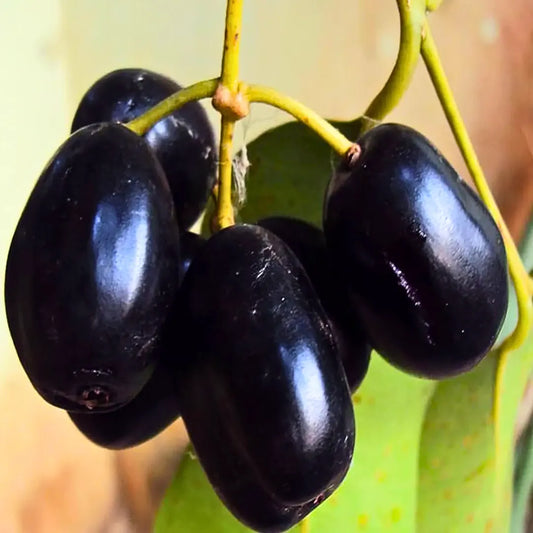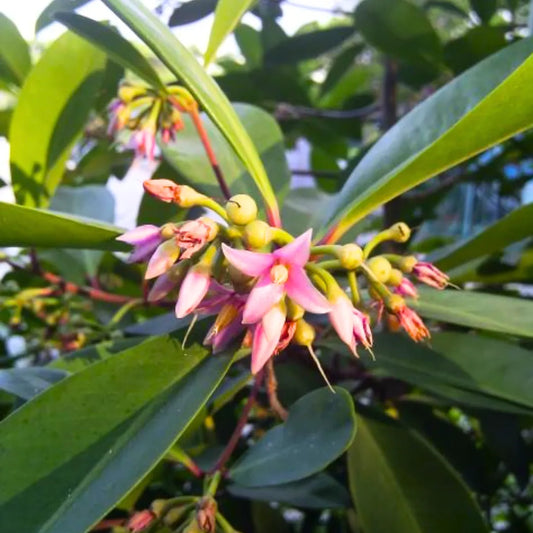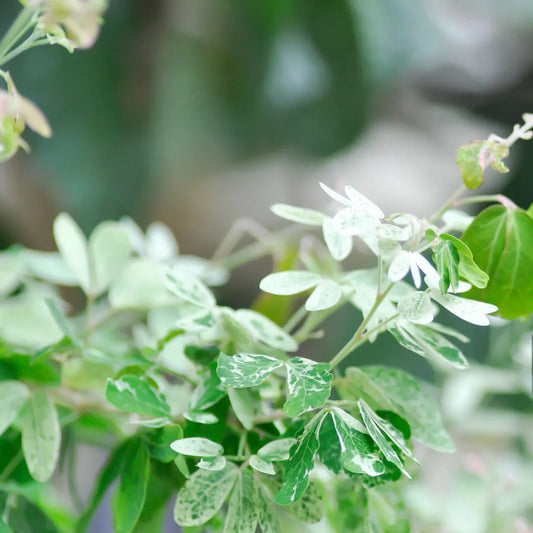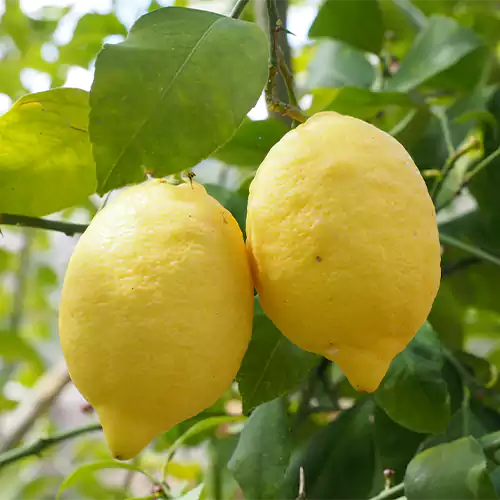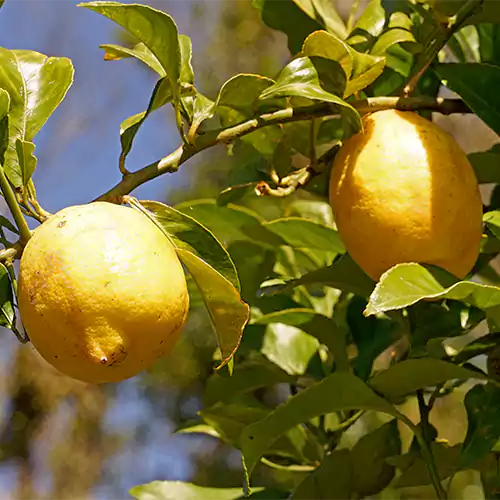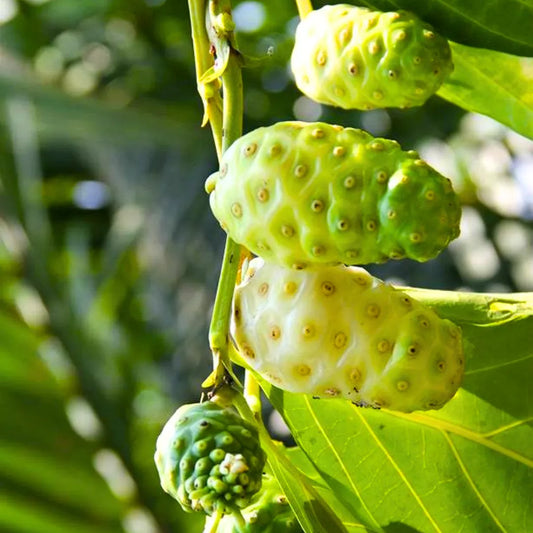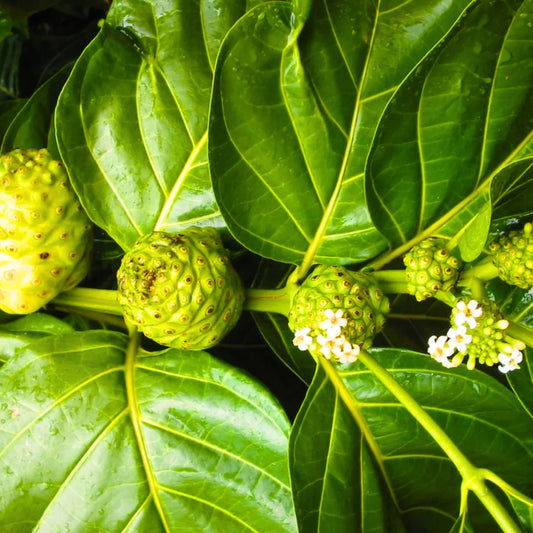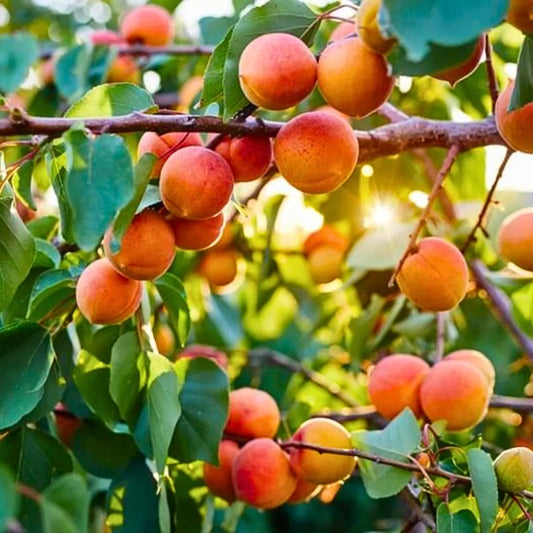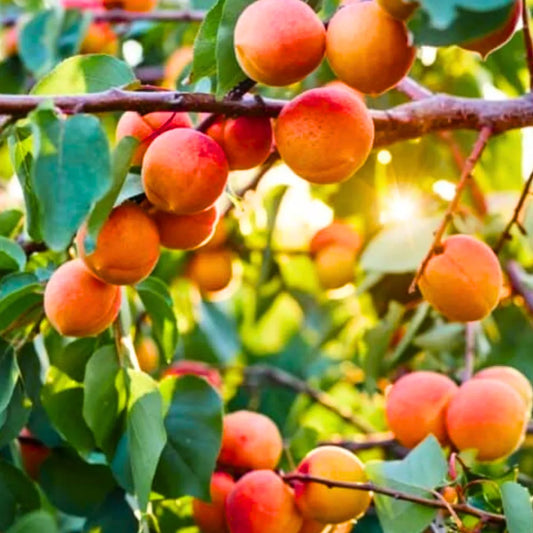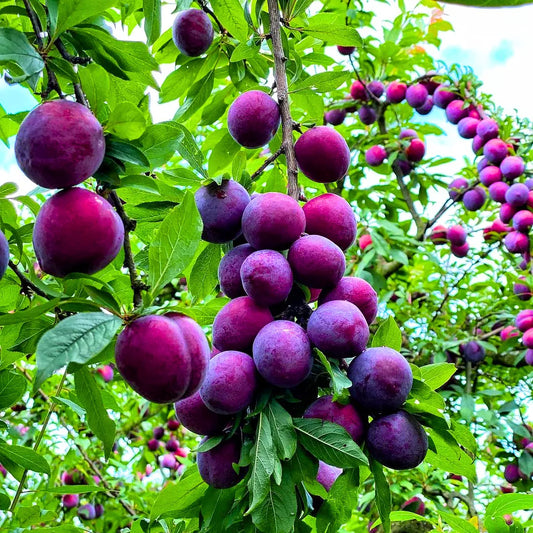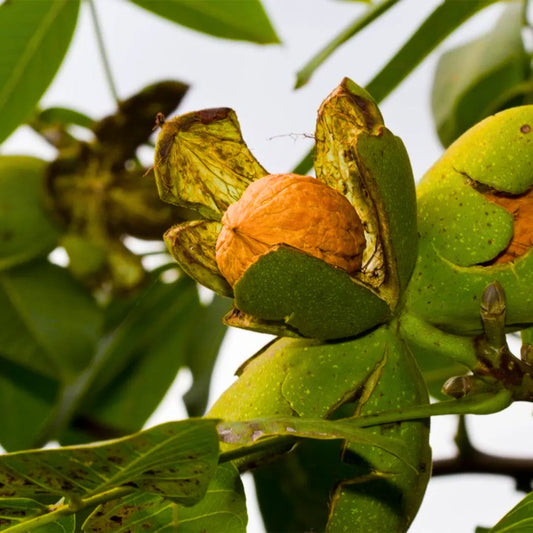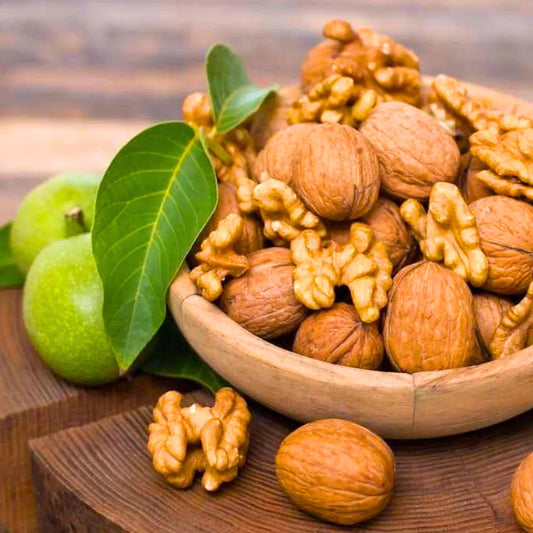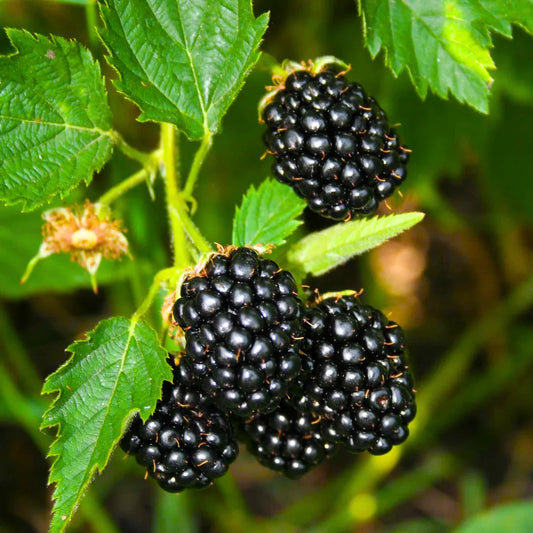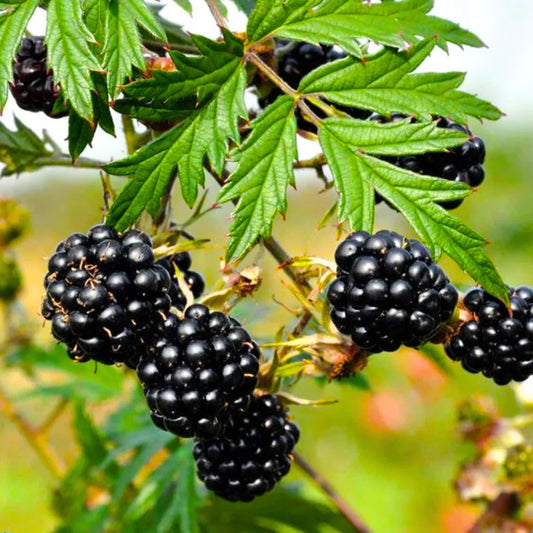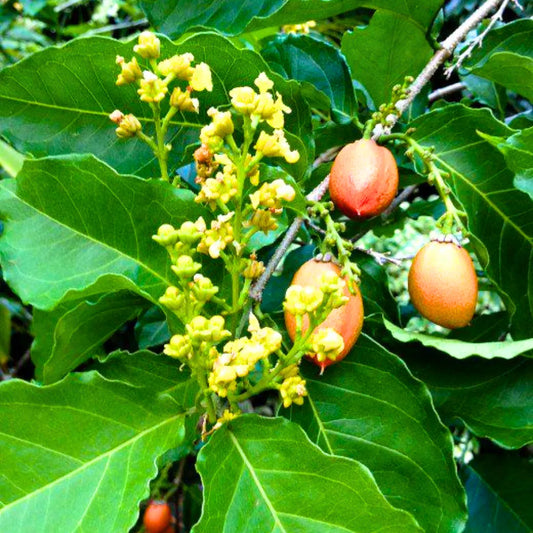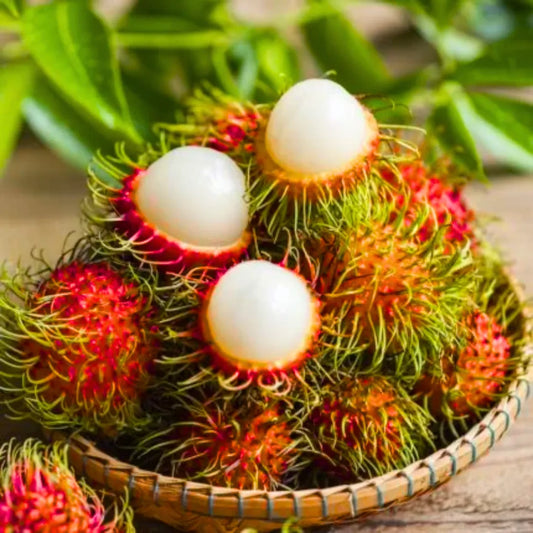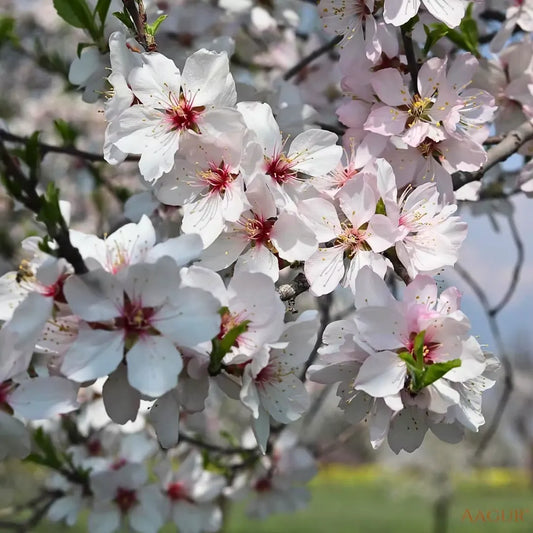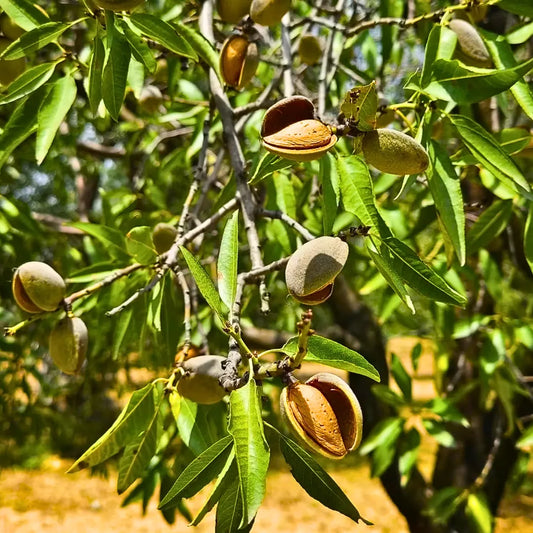Cycas Palm (Cycas Revoluta) Sago Palm - Plant
Cycas Palm (Cycas Revoluta) Sago Palm - Plant
Cycas Revoluta
Couldn't load pickup availability
Share this product
Note: Plants may slightly differ from shown images depending on Season and growth pattern
Questions? Speak with our Experts: 797-436-5167




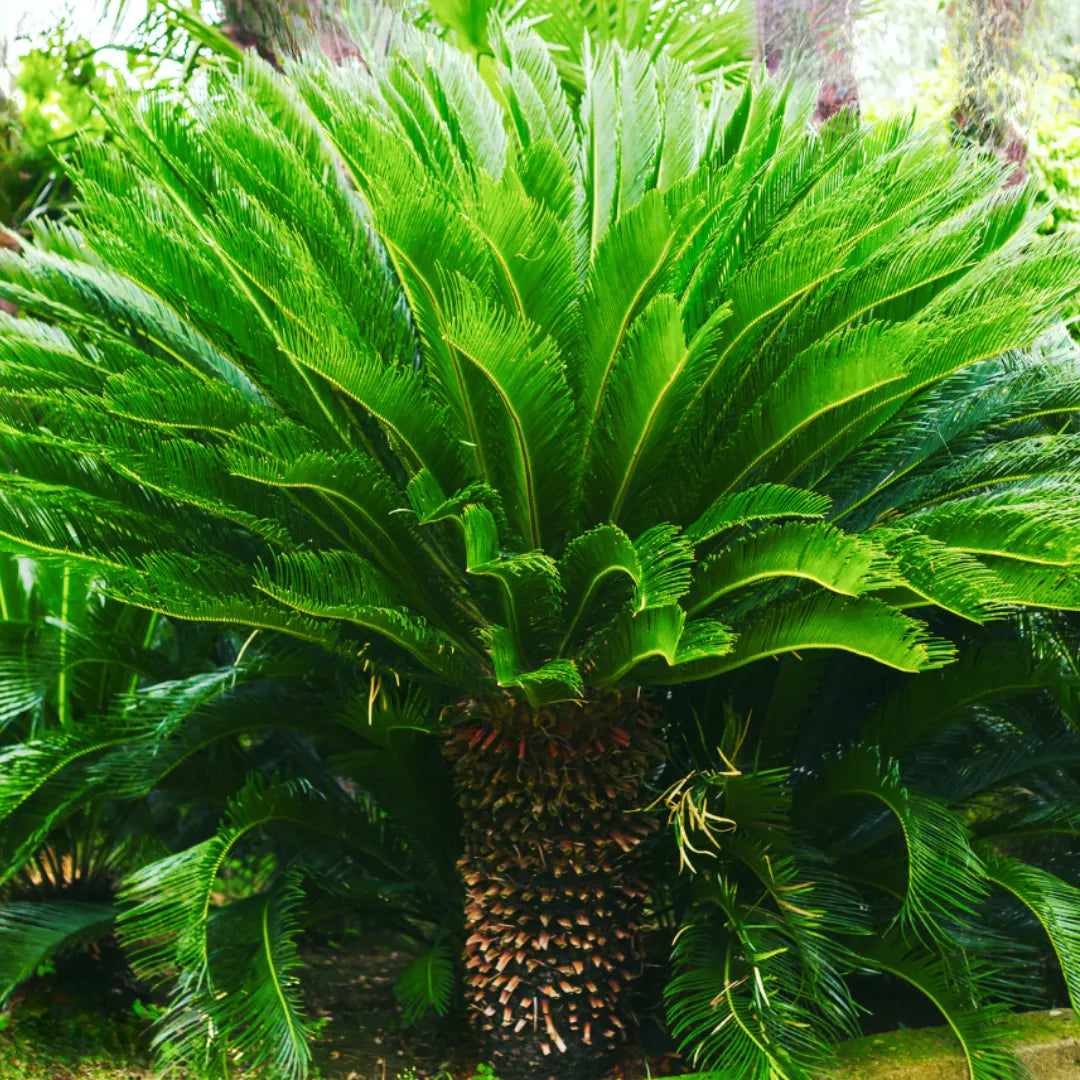
Cycas Palm (Cycas Revoluta) Sago Palm - Plant
Sago Palm, also known as Cycas Palm, is a type of cycad that is native to tropical and subtropical regions of the world. It is not a true palm tree, but it is often referred to as one due to its palm-like appearance.
Sago Palm has a thick trunk that is usually covered in a brown, scaly bark. The leaves are long, feathery, and green, and they grow out of the top of the trunk. The plant produces small, inconspicuous flowers that are followed by bright red or orange berries.
Sago Palm is a slow-growing plant that can reach heights of up to 10 feet. It is a popular ornamental plant in landscaping, and it is also used in traditional medicine in some cultures.
However, it is toxic to animals and humans, if ingested it can cause liver and nervous system failure.
Sago Palm can be propagated from seeds, but it can take several years for the seeds to germinate. It is also commonly propagated by dividing the offsets that grow around the base of the plant.
It prefers well-draining soil, and prefers a sunny location. It is also drought tolerant, but it will grow faster if it is given enough water.
Sago Palm is considered to be an endangered species in many parts of the world, due to habitat destruction and over-collection of wild plants. It's important to be aware of the conservation status of the plant before cultivation or trade.
Growing Requirements
Growing Requirements
Sunlight for Cycas Palm Plant
Your Cycas Palm Plant thrives in bright, indirect sunlight to full sun. It prefers at least 4–6 hours of light daily for healthy growth. When grown indoors, place it near a sunny window with filtered light.
Watering
Your Cycas Palm Plant prefers moderate watering. Allow the topsoil to dry slightly between waterings, as it does not like soggy soil. Water once or twice a week, and reduce frequency during the winter months.
Fertilizing for Cycas Palm Plant
Feed your Cycas Palm Plant with a slow-release balanced fertilizer eFeed the Cycas Palm Plant with a slow-release balanced fertilizer every 2–3 months during the growing season. Choose one rich in magnesium and potassium to support strong roots and lush, green foliage.
Choose one rich in magnesium and potassium to support strong roots and lush, green foliage.
Planting and Care
Planting and Care
Container
Use a sturdy container with good drainage holes for your Cycas Palm Plant. A wide, shallow pot is ideal to accommodate its spreading roots. Fill it with a well-draining sandy or loamy soil mix for best growth.
Pruning
Prune your Cycas Palm Plant by removing yellow or damaged fronds at the base to maintain a tidy appearance and promote healthy new growth. Avoid excessive trimming, as each frond is vital for the plant’s health.
Propagation
Your Cycas Palm Plant is commonly propagated through separating offsets or pups from the base of the mother plant. Allow the cut sections to dry before planting them in a well-draining soil mix for successful rooting.
Repotting
Repot your Cycas Palm Plant every 3–4 years or when it becomes root-bound. Choose a slightly larger pot with proper drainage and use a well-draining sandy soil mix to encourage healthy root and leaf development.
Common Pest
Your Cycas Palm Plant may be affected by scale insects, mealybugs, and aphids. Regularly inspect the leaves and stems, and treat infestations with neem oil or insecticidal soap to keep the plant healthy.
Dimensions
Dimensions
Live Plant along with a Plastic Pot.
Plant height is 18"-24" inches in Large size Pot.
Plant height is 3 feet in XXL 14 inch Pot with 3 feet diameter.
Shipping Details
Shipping Details
In General our team requires 1-2 Days for Processing the Plants and further 3-4 days for it to reach your Home Safely
Our team makes sure to selects only the healthiest, happiest plants for you. We pack them with extra love and care, making sure they have everything they need for a safe and comfortable journey to your doorstep.
We deliver quickly and safely across the country, so your new plant arrives fresh and ready to thrive.
Questions? Speak with our Experts: 797-436-5167
On Bloom This Season
-
Clerodendrum Splendens "Flaming Glorybower" - Plant
No reviewsRegular price From Rs. 449.00Regular priceUnit price / perRs. 700.00Sale price From Rs. 449.00Sale -
Trumpet Vine (Pyrotegia Venusta) - Plant
No reviewsRegular price From Rs. 349.00Regular priceUnit price / perRs. 500.00Sale price From Rs. 349.00Sale -
Jacaranda Mimosifolia "Neel Mohar" - Plant
No reviewsRegular price From Rs. 549.00Regular priceUnit price / perRs. 750.00Sale price From Rs. 549.00Sale -
Black Lady Rose - Plant
No reviewsRegular price From Rs. 599.00Regular priceUnit price / perRs. 800.00Sale price From Rs. 599.00Sale -
Tabebuia Rosea (Rosy Trumpet Tree) "Pink Poui" - Plant
2 reviewsRegular price From Rs. 549.00Regular priceUnit price / perRs. 750.00Sale price From Rs. 549.00Sale
Gardening Add-Ons
-
Decora Pots (Premium Quality) " Gleyz vertical”- “Code – GV”
No reviewsRegular price From Rs. 873.00Regular priceUnit price / per -
Vermicompost- Nutrient Rich Soil Mix (1KG)
No reviewsRegular price Rs. 99.00Regular priceUnit price / per -
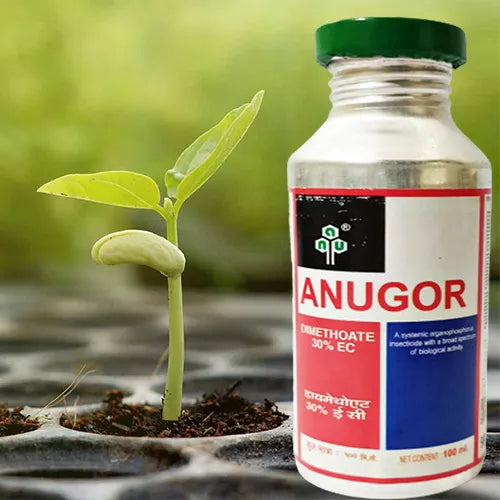 Sold out
Sold outInsecticide | Anugor Insecticide
No reviewsRegular price Rs. 165.00Regular priceUnit price / per -
LOBELLO Premium Quality self watering pot
No reviewsRegular price From Rs. 99.00Regular priceUnit price / per -
Cocoliner Supporting Poles (Coir Poles)
No reviewsRegular price Rs. 150.00Regular priceUnit price / perRs. 199.00Sale price Rs. 150.00Sale
Best Selling Fruit Plants
-
Thai KG 10 Jamun (Syzygium Cumini) - Plant
No reviewsRegular price Rs. 1,449.00Regular priceUnit price / perRs. 1,950.00Sale price Rs. 1,449.00Sale -
Ardisia Elliptica (Duck's eye, Coralberry) - Plant
No reviewsRegular price Rs. 1,249.00Regular priceUnit price / perRs. 1,700.00Sale price Rs. 1,249.00Sale -
Jungle Jalebi "Thornless" (Pithecellobium Dulce) - Plant
No reviewsRegular price Rs. 1,399.00Regular priceUnit price / perRs. 1,850.00Sale price Rs. 1,399.00Sale -
Grafted Peach (Prunus Persica) Aadu – Plant
No reviewsRegular price Rs. 1,449.00Regular priceUnit price / perRs. 2,100.00Sale price Rs. 1,449.00Sale -
Jungle Jalebi white (Pithecellobium Dulce) Manila Tamarind - Plant
No reviewsRegular price Rs. 749.00Regular priceUnit price / perRs. 1,000.00Sale price Rs. 749.00Sale -
Kaagazi Nimboo, Lemon – Plant
No reviewsRegular price From Rs. 499.00Regular priceUnit price / perRs. 750.00Sale price From Rs. 499.00Sale -
Noni (Morinda Citrifolia) - Plant
No reviewsRegular price Rs. 1,399.00Regular priceUnit price / perRs. 2,100.00Sale price Rs. 1,399.00Sale -
Apricot (Prunus Armeniaca) - Plant
No reviewsRegular price Rs. 1,399.00Regular priceUnit price / perRs. 2,100.00Sale price Rs. 1,399.00Sale -
Plum (Prunus Domestica) Aloo Bukhara - Plant
No reviewsRegular price From Rs. 599.00Regular priceUnit price / perRs. 800.00Sale price From Rs. 599.00Sale -
Walnut (Juglans Regia) - Plant
No reviewsRegular price Rs. 649.00Regular priceUnit price / perRs. 900.00Sale price Rs. 649.00Sale -
Blackberry (Rubus Fruticosus) - Plant
No reviewsRegular price Rs. 1,499.00Regular priceUnit price / perRs. 2,000.00Sale price Rs. 1,499.00Sale -
Peanut Butter (Bunchosia Glandulifera) - Plant
No reviewsRegular price From Rs. 649.00Regular priceUnit price / perRs. 850.00Sale price From Rs. 649.00Sale -
Rambutan N18 (Nephelium Lappaceum) - Plant
No reviewsRegular price Rs. 1,149.00Regular priceUnit price / perRs. 1,700.00Sale price Rs. 1,149.00Sale -
Kashmiri Almond (Badam) - Plant
No reviewsRegular price From Rs. 749.00Regular priceUnit price / perRs. 1,000.00Sale price From Rs. 749.00Sale
Let customers speak for us
from 70 reviewsthis is my second purchase from Lalit ent. From Bhopal to Mumbai. Nice timely delivery. Healthy plant. Both desi hibiscus and Rama Tulsi healthy plants
Packaging 5 Stars
Delivery time 4 Stars.
Plant quality - Healthy
Plant size - As expected
Shipped through Nursery Nisarga via Delhivery
Plant arrived healthy and in excellent packaging. Best packaging I've seen from any online nursery. Thanks nursery Nursery Nisarga
The plant was very fresh and neatly packed. The delivery was quicker than I expected and very pleased with it. Doesn’t have any flowers yet but I’m very sure it’ll bloom some wonderful flowers as time progresses.
Good packing
I recently purchased Kalpvriksha plant from Lalit Enterprise, it delivered in very good condition
Nice packaging. thanks
My alocasia has been an absolute delight... While the first few leaves started to turn yellow initially, I kept caring for the plant as recommended, and to my joy, it began to thrive beautifully. Now it graces my home with lush, vibrant foliage and adds a tropical charm that’s simply unmatched. It's a resilient and rewarding plant that truly transforms with the right care. Highly recommended...
Its beautifully variegated foliage, with shades of green and creamy yellow, adds a touch of sophistication to any space. The plant I received was well-packaged, healthy, and ready to thrive. It has quickly become the centerpiece of my indoor garden. Caring for it is simple, making it a great choice for both beginners and seasoned plant enthusiasts. If you're seeking a plant that's equal parts stylish and low-maintenance, this one's a winner....
The plant arrived in perfect condition, and its furry, rabbit like rhizomes are such a delight….. truly unique and charming. It's a breeze to care for, needing just the right amount of indirect light and moisture to thrive. The lush, vibrant green leaves have added a touch of natural elegance to my space, and it's quickly become a favorite in my plant collection. Lalit Enterprises provided top-notch service with fast delivery and excellent packaging. Highly recommend both the Rabbit Foot Fern and Lalit Enterprises to anyone looking to add a stunning plant to their home....
Plants are too awesome and healthy condition plants I will place more orders in future
plant very good condition packing is very good
M from Bangalore was not sure if I will get plant in 1 pc the packing was really good an plant was also healthy thank you
I received the rose creeper plants in excellent condition. The packaging was outstanding and professionally done, ensuring the plants arrived safely. The seller's attention to detail and care is commendable. I highly recommend this seller to anyone looking for good-quality plants and reliable service.
Received healthy plant with good variagation. Packaging and medium was very nice.







